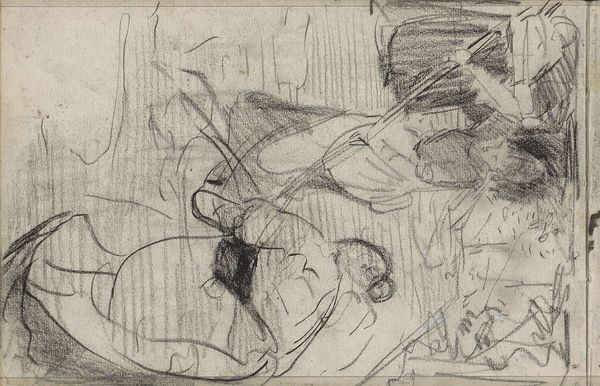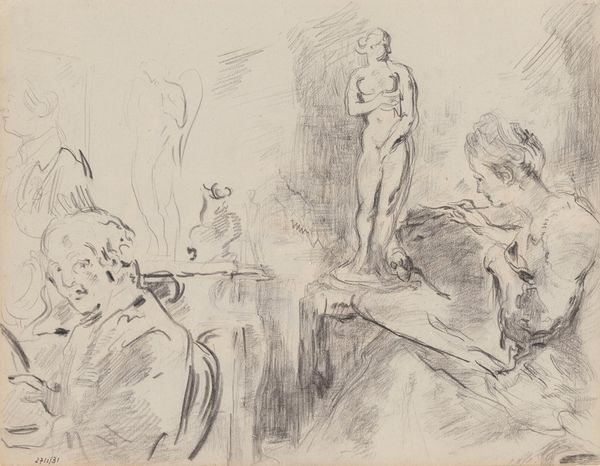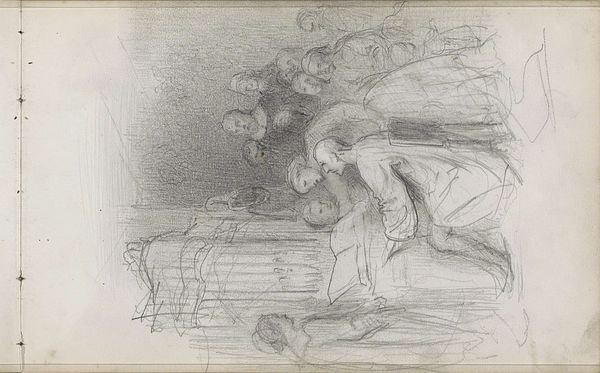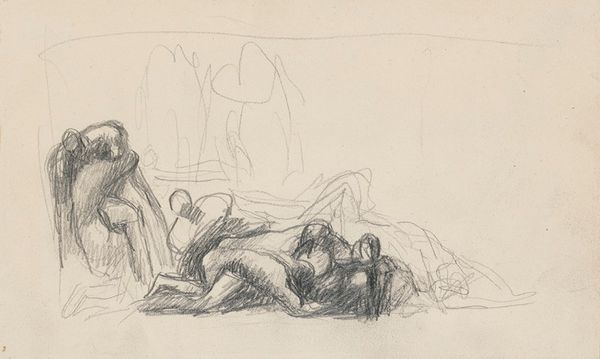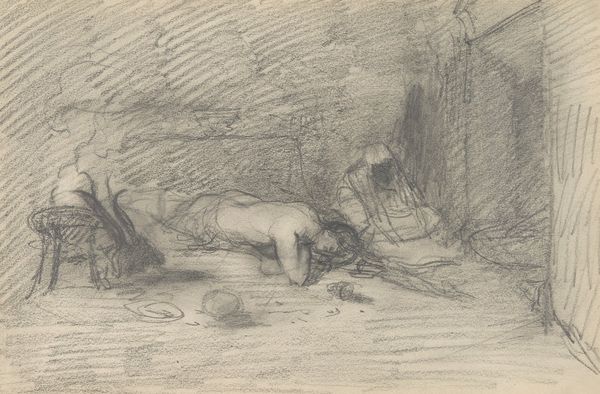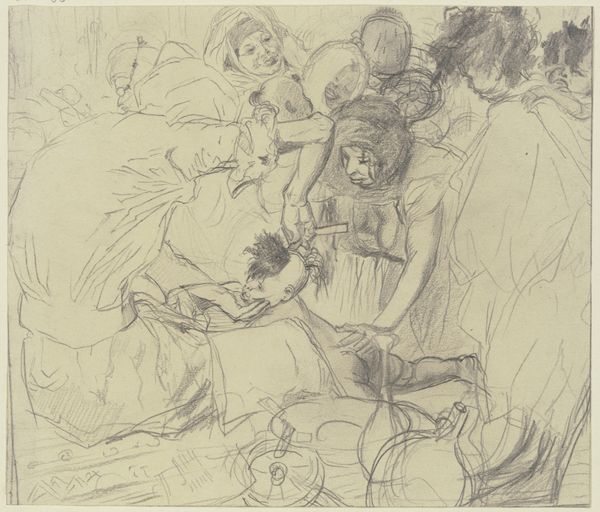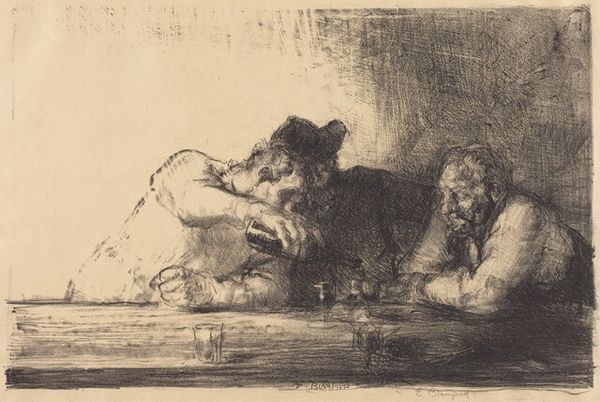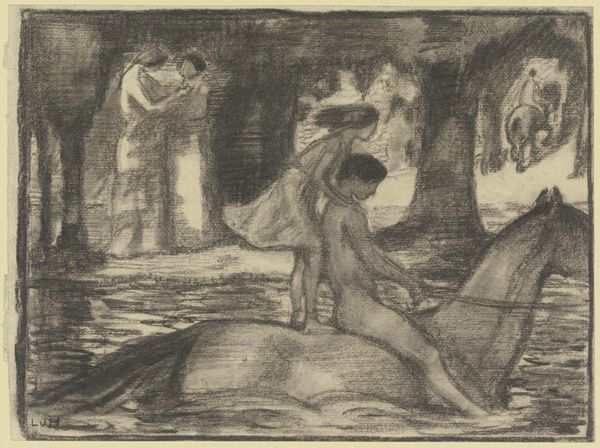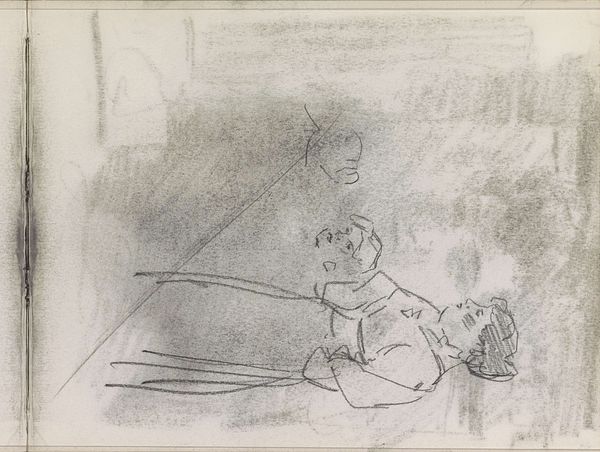
Copyright: Public Domain: Artvee
James Abbott McNeill Whistler created "The Little Forge" using etching, a printmaking process that involves using acid to corrode lines in a metal plate, which then holds ink to make multiple impressions. Whistler's choice of etching, instead of traditional painting, allowed him to explore themes of labor and industry, as well as the effect of light in the work. The technique lends a gritty quality, mirroring the environment of a blacksmith's shop with its intense labor, fire, and clang of metal. The immediacy of the etched line captures the fleeting movements of the workers, and the rough textures of the forge, with its implements and tools. Whistler wasn't just depicting a scene, he was embedding his own work within a larger network of industrial production. By focusing on such subjects, Whistler blurred the lines between fine art and everyday life, and between the artist and the artisan. The making of the artwork and the making of the tools both share the concept of process. Ultimately, the print serves as a reminder of the value of craft and the dignity of labor.
Comments
No comments
Be the first to comment and join the conversation on the ultimate creative platform.
